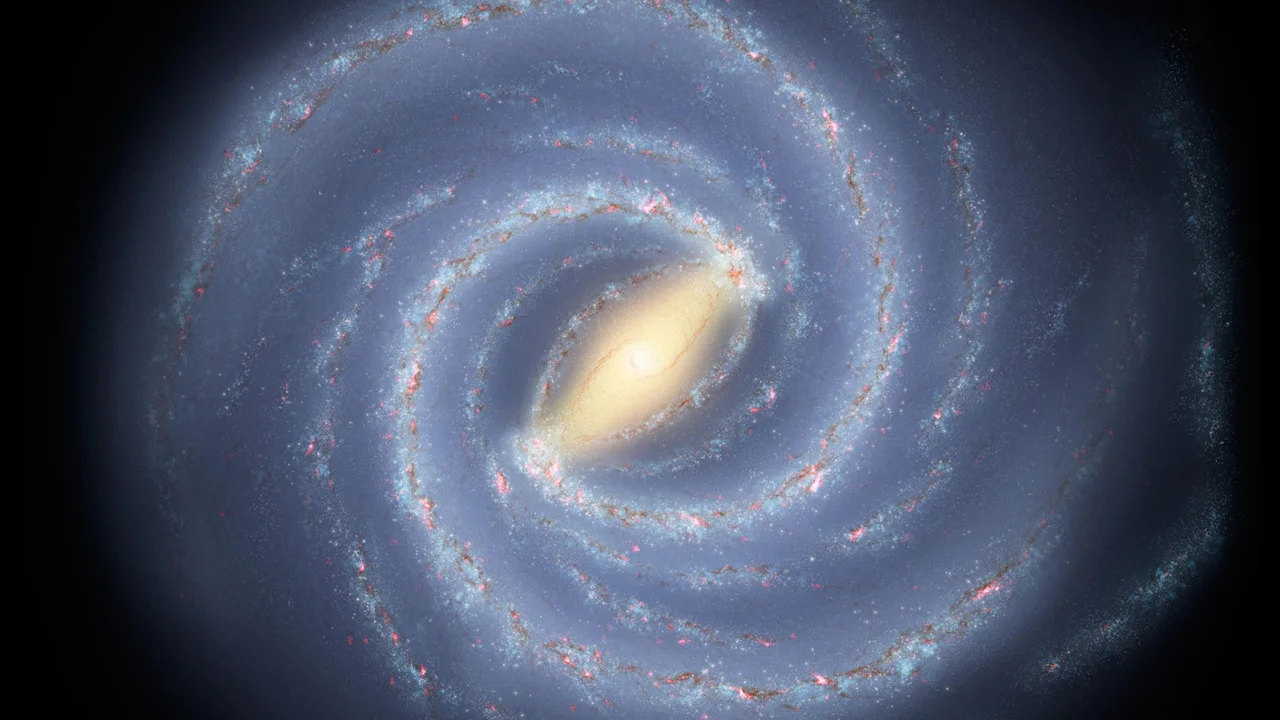(CNN) — Astronomers have discovered an intriguing phenomenon in the distant universe – a galaxy very similar to the Milky Way – and it challenges major theories about how galaxies evolve.
The distant system, called CEERS-2112, was discovered by an international team thanks to the James Webb Space Telescope.
Like our parent galaxy, the newly discovered Ceers-2112 galaxy is a barred spiral galaxy and is now the most distant of its kind ever observed. The strip in the center of the structure is made of stars.
Ceers-2112 formed shortly after the Big Bang created the universe (estimated to be 13.8 billion years old), and the galaxy’s distinctive structure was already in place 2.1 billion years later.
Given the distance between Earth and objects from the earliest days of the universe, when telescopes like Webb observe light from the distant universe, it’s like looking back into the past.
“Unexpectedly, this discovery reveals that galaxies similar to our own already existed 11.7 billion years ago, when the universe was only 15 percent old,” Luca Costantin, the study’s lead author, said in a statement. He is a postdoctoral researcher at the Superior Scientific Council of Spain at the Spanish Center for Astrobiology in Madrid.
Astronomers were surprised to see such a well-ordered and orderly galaxy at a time when other galaxies were much more irregular. While massive spiral galaxies are common in the cosmic neighborhood of the Milky Way, this was not always the case.
This discovery, made possible by Webb’s extremely sensitive light-detecting capabilities, changes scientists’ understanding of galaxy formation and the early stages of the universe.
“The finding of CEERS-2112 shows that galaxies in the early universe could have been arranged like the Milky Way,” study co-author Alexander de la Vega, a postdoctoral researcher at the University of California, Riverside, said in a statement. “This is surprising because galaxies were much more chaotic in the early universe and very few of them had structures similar to the Milky Way.”
A study detailing the findings was published November 8 in the journal Nature.
Early evolution of barred spiral galaxies
Astronomers believed that barred spiral galaxies, such as the Milky Way, did not appear until after the universe had reached at least half its current age, because several billion years of galactic evolution were thought to be needed before massive clusters of stars could Within galaxies form central bars. .
Bars form when stars within spiral galaxies orbit in an orderly manner, as happens in the Milky Way. Until now, astronomers did not believe that early galaxies were stable enough for bars to form or persist.
But the discovery of Ceers-2112 suggests that this evolution only took about a billion years or less, de la Vega said.
“Almost all bars are found in spiral galaxies,” de la Vega said. “The bar in CEERS-2112 suggests that galaxies matured and organized much faster than we previously thought, which means that some aspects of our theories about galaxy formation and evolution need to be revised.”
Dark matter research
De la Vega believes astronomers will need to change their theoretical models of how galaxies form and evolve, taking into account the amount of dark matter present in more primitive galaxies.
Although dark matter has never been discovered, it is thought to make up 85% of the total matter in the universe, something the European Space Agency’s Euclid telescope was designed to do. It is possible that dark matter played a role in the formation of the bars.
This discovery also suggests that bars can be detected in early galaxies, even though the oldest galaxies are much smaller.
“The discovery of CEERS-2112 paves the way for the discovery of more bars in the young universe,” de la Vega said. “At first I thought that detecting and estimating the properties of bars in galaxies like SEARS-2112 would be plagued by measurement uncertainties. But the power of the James Webb Space Telescope and the expertise of our research team helped us establish strong constraints on the size and shape of the bar.”

“Proud web fanatic. Subtly charming twitter geek. Reader. Internet trailblazer. Music buff.”



:quality(85)/cloudfront-us-east-1.images.arcpublishing.com/infobae/KAYSXK65OZG55CR3YX225WI6Z4.jpg)



More Stories
Scary “spiders” found on Mars
The only human buried on the moon is an American
Five tricks to stop receiving spam emails